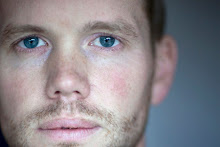One reason to go to the theatre is having a desire to be confronted with an exceptional experience. Theatre scholar Adrian Keer describes this experience perfectly: “to be ‘moved’ by a piece, to be shocked, stimulated, exhilarated, amused or horrified is, in effect to have a ‘gut reaction’ to it: a visceral as well as intellectual experience ‘that strikes us first in the belly then runs through our whole body’(1)”.
This depth of experience, this combination of a visceral and intellectual shock is not commonly found. As an example of a performance where he found this qualities, Keer mentions Alain Platel’s work Bernadetje, a performance he describes as “an event of extraordinary insight and intesnsity (2)”.
Platel has become a master in crafting these extraordinary experiences. Shocking, beautiful, intense - his numerous performances have accomplished a huge degree of public and critical acclaim through the years. His most recent work Out of Context, draws inspiration from his earlier life as a movement therapist. The performance was developed from an investigation into limited movements that grew into a rich choreography of bizarre beauty. This performance will be shown in Utrecht within the Festival a/d Werf. Below you can see a couple of interviews with Platel about this work. The interviews are in Dutch but the images speak for themselves.
NOTES:
1. Alan Keer, “Desire amongst the dodgems, Alain Platel ad the scene of seduction” in J.Kelleher and N. Ridout, eds., Contemporary Theatres in Europe, Routledge, London and New York:Routledge, 2006, pp.106-119, (p.106)
2. Ibid, p. 107 This performance was also shown in one of the earlier editions of the Festival a/d Werf.
Tuesday, February 16, 2010
Thursday, February 11, 2010
The Viewmaster: performance & workshop
“You know it's a trick, you can see how the trick is made. But you still want to see it”. There could not be a better description for what happens with the Viewmaster, which was performed at Huis a/d Werf last Tuesday the 2nd of February. This is a performance that makes use of the Pepper Ghost effect, an optical illusion discovered in the 19th Century. Through this, people and objects give the impression of appearing and disappearing, fading in an out of sight and walking around in a transparent ghost-like consistency. Heike Langsdorf, Ula Sickle and Laurent Liefooghe worked with this technique and developed several ways of using the Viewmater over a long research period. They ended up having “a catalog of effects” that they could use. For the performance, they decided to concentrate on only a few of the possibilities discovered for the sake of unity. However, the latent possibilities of this wonderful object still linger around and the creators felt the need to do something about them. In order to further explore the potential of the Viewmaster, they have decided to allow it to grow into a new project called The series. For this, several artists from different disciplines will be invited to explore the unused potential of the Viewmaster. The first of such artists is Inari Salmivaara, who will work at the Huis a/d Werf as a guest explorer of the Viewmaster. Her completed performance will premiere on the 26th of February. Below you can see some pictures of the workshop in which the functioning of the Viewmaster was explained, and the first imaginative exercises of Inari Salmivaara, where she has started to investigate the combination of the Viewmaster with video projection.
Labels:
Huis a/d Werf,
Optical Ilusion,
Workshop
Talking to James and thinking about the polish theater master
As I was interviewing James Beckett a while ago, I couldn’t stop thinking about Tadeusz Kantor (1915-1990). So many things struck me as similar. Kantor, one of the greatest theatre directors of the 20th century, was originally a visual artist. And one could clearly see traces of his obsessions as a visual artist in the way in which he organized the elements on the stage (actors and objects alike). One of this obsessions was looking for objects with a particular aura, that he beautifully described as “being halfway between the trashcan and eternity”. And this phrase fits the work of James Becket like a glove. The South African artist (Becket that is), was also originally trained in the field of the visual arts, and he has been doing research on industrial heritage in Poland for the past few months. This research is, as he himself describes it, a very “concrete” approach to the industrial heritage of this country. He was looking for objects with a sensitivity that Kantor would have approved of. James told me with enthusiasm how he found an electric transistor that had a very primitive quality to it, “It looked like a bone”, he said. James’s choice of country is, lastly, the final connection to Kantor, who was born in Wielopole (a city that makes part of present day Poland) and who had a conflicting and creative relationship to Poland and it’s history.
Click here to watch the interview:
Click here to watch the interview:
Subscribe to:
Posts (Atom)


